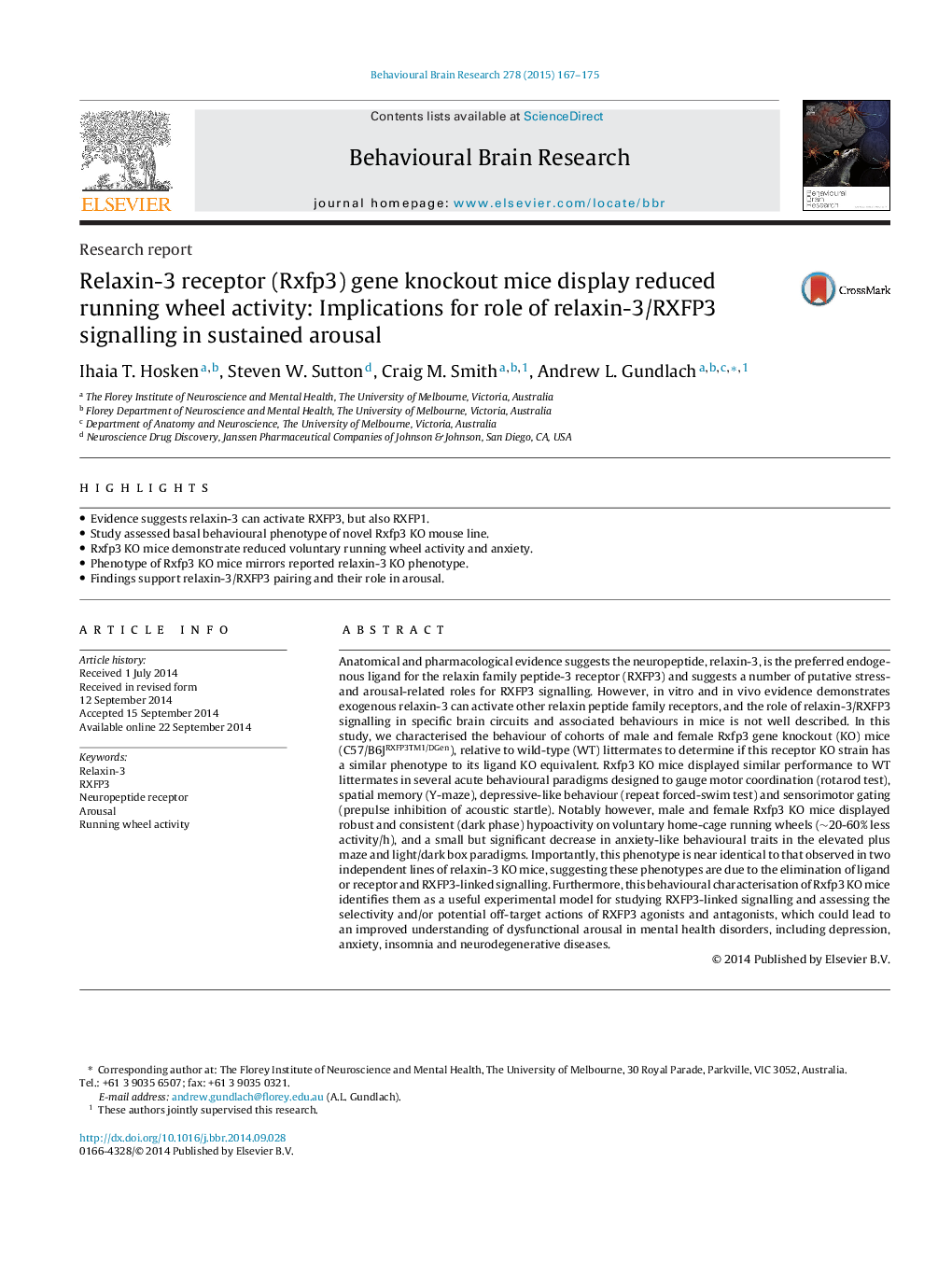| کد مقاله | کد نشریه | سال انتشار | مقاله انگلیسی | نسخه تمام متن |
|---|---|---|---|---|
| 6257579 | 1612954 | 2015 | 9 صفحه PDF | دانلود رایگان |

• Evidence suggests relaxin-3 can activate RXFP3, but also RXFP1.
• Study assessed basal behavioural phenotype of novel Rxfp3 KO mouse line.
• Rxfp3 KO mice demonstrate reduced voluntary running wheel activity and anxiety.
• Phenotype of Rxfp3 KO mice mirrors reported relaxin-3 KO phenotype.
• Findings support relaxin-3/RXFP3 pairing and their role in arousal.
Anatomical and pharmacological evidence suggests the neuropeptide, relaxin-3, is the preferred endogenous ligand for the relaxin family peptide-3 receptor (RXFP3) and suggests a number of putative stress- and arousal-related roles for RXFP3 signalling. However, in vitro and in vivo evidence demonstrates exogenous relaxin-3 can activate other relaxin peptide family receptors, and the role of relaxin-3/RXFP3 signalling in specific brain circuits and associated behaviours in mice is not well described. In this study, we characterised the behaviour of cohorts of male and female Rxfp3 gene knockout (KO) mice (C57/B6JRXFP3TM1/DGen), relative to wild-type (WT) littermates to determine if this receptor KO strain has a similar phenotype to its ligand KO equivalent. Rxfp3 KO mice displayed similar performance to WT littermates in several acute behavioural paradigms designed to gauge motor coordination (rotarod test), spatial memory (Y-maze), depressive-like behaviour (repeat forced-swim test) and sensorimotor gating (prepulse inhibition of acoustic startle). Notably however, male and female Rxfp3 KO mice displayed robust and consistent (dark phase) hypoactivity on voluntary home-cage running wheels (∼20-60% less activity/h), and a small but significant decrease in anxiety-like behavioural traits in the elevated plus maze and light/dark box paradigms. Importantly, this phenotype is near identical to that observed in two independent lines of relaxin-3 KO mice, suggesting these phenotypes are due to the elimination of ligand or receptor and RXFP3-linked signalling. Furthermore, this behavioural characterisation of Rxfp3 KO mice identifies them as a useful experimental model for studying RXFP3-linked signalling and assessing the selectivity and/or potential off-target actions of RXFP3 agonists and antagonists, which could lead to an improved understanding of dysfunctional arousal in mental health disorders, including depression, anxiety, insomnia and neurodegenerative diseases.
Journal: Behavioural Brain Research - Volume 278, 1 February 2015, Pages 167–175